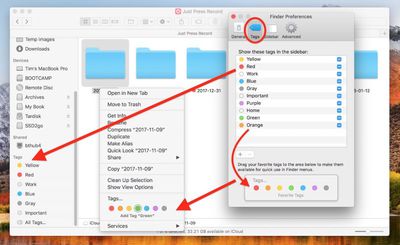
Now let’s say that I want to change the title at the end of my film because there was a typo the first time. And that takes only a couple seconds, instead of 60 seconds from before. It does not need to render any of my color corrections – it just needs to read that rendered file and encode it (we usually call that a transcode).
#PREMIERE PRO MAC NOT SHOWING GREEN RED AND YELLOW BUTTONS PRO#
Now if I ask Premiere Pro to export the clip again, and I check the box in the export settings that says “use previews,” now Premiere will simply take the file that it saved when I rendered and compress that to my output codec. The green bar means that Premiere Pro doesn’t need to render that section of my timeline again when it exports. Now Premiere renders that clip and saves it away, and the bar on my timeline turns green.

I click on “sequence” and then “render in to out”. I can use that file for exporting later without rendering all over again. If it’s a long clip with a lot of adjustments, the export might take about 60 seconds.īut I can also tell Premiere to just render the clip, and save that rendered file on the hard drive. Then it’s going to compress that data into my output codec.

If I tell Premiere Pro to export, it’ll render that file with my color correction. Imagine I have a clip on my timeline with a bunch of color corrections. If we’re careful about our rendering and exporting, though, we can save a lot of time. You often render out a rough cut, and then you get feedback from your producer or your client (perhaps using a tool like Frame.io), and then you need to export again after you have made some tweaks.Īnd then the process repeats itself, so you often end up exporting the same timeline several times. In most situations, you don’t just render out your timeline once. But our first trick allows you to avoid rendering and encoding multiple times. Now, it’s usually not possible to skip either one of those steps-you usually have to render and then encode when you’re exporting. So, we start with a compressed file, and we end up with a compressed file. It saves that compressed data to the output file. Then it encodes the image into whatever codec you chose in your export settings. Next, it applies any transformations that you’ve done in your sequence – color correction, resizing, any manipulations to the image. It’s not saving the uncompressed image to a file – it’s just holding it temporarily in memory. Then it decompresses the file so that it can deal with the actual image. Premiere Pro starts the export process by reading the source file that you have imported into your project. When Premiere Pro exports some edited video, it has to do two separate tasks: rendering and encoding. It’s important that you understand what that means, so you can understand why our tricks can save you time. Each of them has advantages for a different type of workflow.

This guide will walk you through four different ways that you can speed up your exports in Adobe Premiere Pro.įollow the video tutorial for a step-by-step, or skim the article if you’re interested in a specific technique. If you want faster exports from Premiere Pro, you’ve come to the right article.


 0 kommentar(er)
0 kommentar(er)
